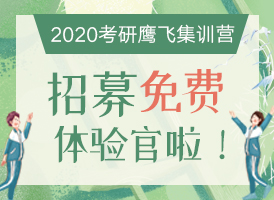2020考研英语同源外刊,是为帮助2020考研学子能够更好的提升英语水平,而整理的精选文章。以下是北京文都考研网给出的“2020考研英语同源外刊:孕妇吸入污染空气后”,供考生参考。
2020考研英语同源外刊:孕妇吸入污染空气后
Tiny particles of soot breathed in by pregnant women have been found in the womb, where they can harm the growing baby, research shows.
研究表明,孕妇的子宫里发现了她们吸入的有毒烟尘颗粒,而这很有可能会伤害正在发育的胎儿。
Air pollution has long been linked to a lower birth weight, higher infant mortality and childhood respiratory problems such as asthma.
长期以来,空气污染都被认为与较低的新生儿体重、较高的婴儿死亡率以及儿童呼吸系统疾病有关。
Now a study, carried out after women gave birth, has found soot particles in the placenta.
现在,一项在妇女分娩后进行的研究发现,胎盘里有污染颗粒。
This raises the possibility that the poisonous black particles could reach the foetus, the authors said.
作者说,这增加了有毒黑色粒子伤害胎儿的可能性。
The research, by a team from Queen Mary University of London, was presented to the European Respiratory Society International Congress in Paris yesterday.
这项研究由英国伦敦玛丽女王大学伦的一个研究团队主导,昨天在巴黎举行的欧洲呼吸学会国际大会上公布。
Dr Lisa Miyashita, a post-doctoral researcher, said: ‘We’ve known for a while that air pollution affects foetal development and can continue to affect babies after birth and throughout their lives. We were interested to see if these effects could be due to pollution particles moving from the mother’s lungs to the placenta. Until now, there has been very little evidence that inhaled particles get into the blood from the lung.’
博士后研究员莉萨·宫下说:“我们早就知道空气污染会影响胎儿的发育,并且在婴儿出生后继续影响其一生。我们感兴趣的是这些是否可能是污染颗粒从母亲的肺部转移到胎盘所导致的。到目前为止,几乎没有证据表明吸入颗粒物是从肺部进入血液的。”
Scientists worked with five pregnant women who lived in London and were due to have caesarean deliveries at the Royal London Hospital. All were non-smokers with an uncomplicated pregnancy and each one gave birth to a healthy baby.
科学家们对5名住在伦敦的孕妇进行了跟踪调查,这5人都不吸烟,孕期均很顺利,也都在医院接受剖腹产手术生下了健康的婴儿。
Experts who studied the placentas after delivery were interested in cells called placental macrophages – part of the body’s immune system which engulf harmful particles such as bacteria and pollution to protect the foetus.
科学家们对5名孕妇分娩后留下的胎盘进行了研究,主要是研究胎盘里的巨噬细胞——该细胞是身体免疫系统的一部分,可以吞噬有害颗粒,比如细菌和污染物,从而保护胎儿。
The team studied a total of 3,500 placental macrophage cells and examined them under a high-powered microscope.
他们借助高倍显微镜,对3500个巨噬细胞进行了研究。
They found 60 cells that between them contained 72 small black areas. Researchers believe these were carbon particles. On average, each placenta contained around five square micrometres of this substance.
结果显示,其中60个巨噬细胞里含有72个小型的黑色区域。研究人员相信,这些就是碳颗粒。平均来说,每个胎盘中,大约有5平方微米的区域里有这种物质。
The scientists then studied the placental macrophages from two placentas in greater detail using an electron microscope, and again found material that they believe was made up of tiny carbon particles.
随后,科学家们用电子显微镜对来自两个胎盘的巨噬细胞进行了更详细的研究,再次发现了他们认为是由微小碳颗粒组成的物质。
Researcher Dr Norrice Liu said: ‘Our results provide the first evidence that inhaled pollution particles can move from the lungs into the circulation and then to the placenta.
研究人员诺里斯·刘说:“我们的研究结果首次证明,(孕妇)吸入的污染颗粒可以从肺部进入血液循环,然后抵达胎盘。“
‘We do not know whether the particles we found could also move across into the foetus, but our evidence suggests that this is indeed possible.’
“我们不知道这些颗粒物质是否也会进入胎儿体内,不过证据表明这确有可能。”
考研英语同源外刊双语文章包含《每日邮报》、《华尔街日报》、《英语卫报》、《纽约时报》和《时代周刊》里面的精美文章,希望上述外刊双语文章对2020考研者在英语备考方面有所帮助!
推荐阅读:



